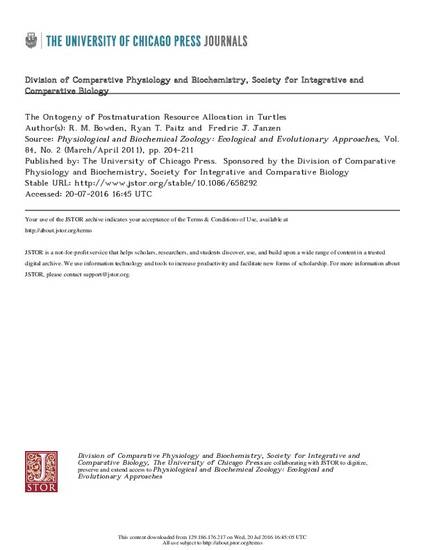
Resource-allocation decisions vary with life-history strategy, and growing evidence suggests that long-lived endothermic vertebrates direct resources toward growth and self-maintenance when young, increasing allocation toward reproductive effort over time. Few studies have tracked the ontogeny of resource allocation (energy, steroid hormones, etc.) in long-lived ectothermic vertebrates, limiting our understanding of the generality of life-history strategies among vertebrates. We investigated how reproductively mature female painted turtles (Chrysemys picta) from two distinct age classes allocated resources over a 4-yr period and whether resource-allocation patterns varied with nesting experience. We examined age-related variation in body size, egg mass, reproductive frequency, and yolk steroids and report that younger females were smaller and allocated fewer resources to reproduction than did older females. Testosterone levels were higher in eggs from younger females, whereas eggs from second (seasonal) clutches contained higher concentrations of progesterone and estradiol. These allocation patterns resulted in older, larger females laying larger eggs and producing second clutches more frequently than their younger counterparts. We conclude that resource-allocation patterns do vary with age in a long-lived ectotherm.
Available at: http://works.bepress.com/fredric-janzen/35/

This article is from Physiological and Biochemical Zoology 84 (2011): 204, doi: 10.1086/658292. Posted with permission.